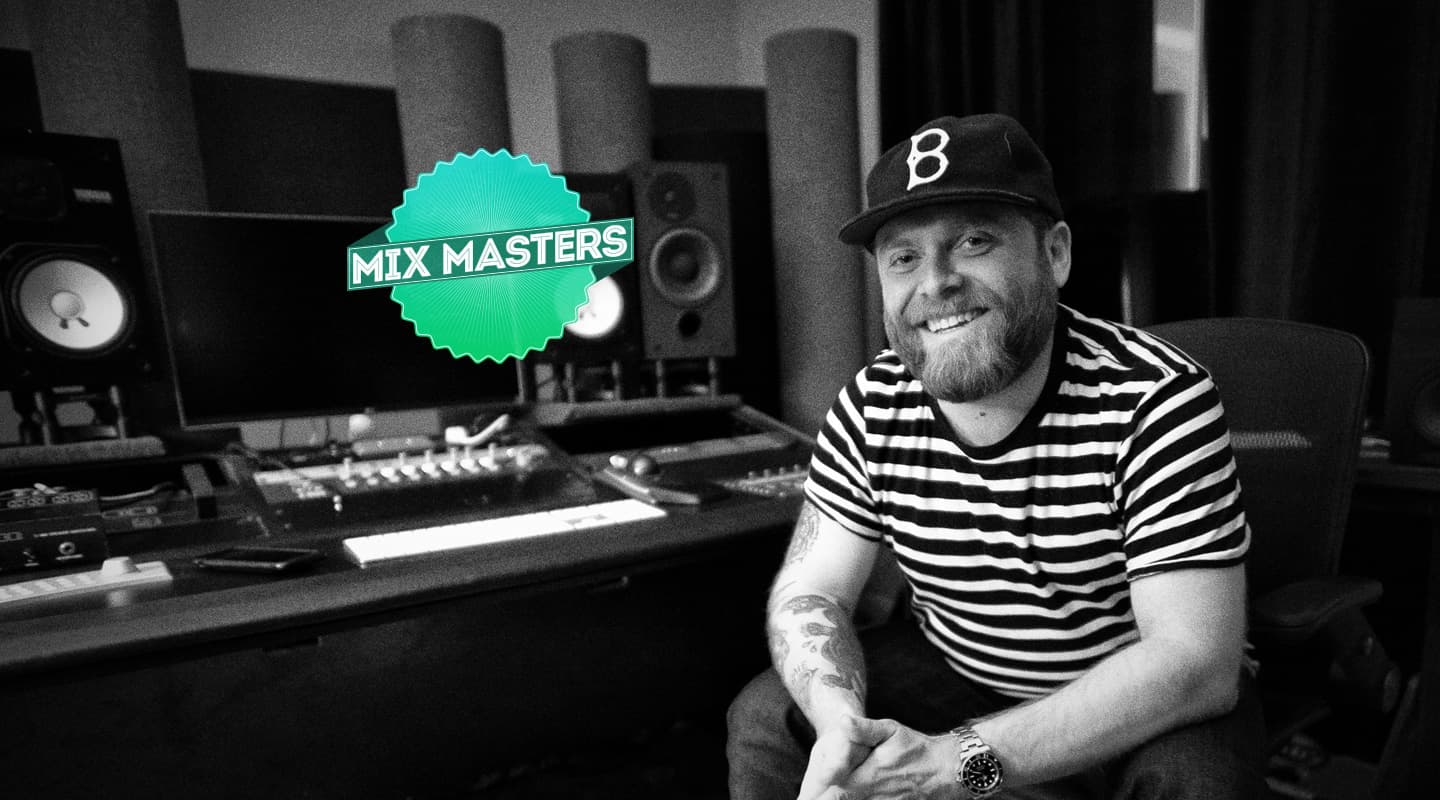
Mix Masters: How to Bury a Friend
Billie Eilish began making music at the age of 11 and was signed to a recording contract by the age of 14. Now she's a 5 time Grammy award winner at 18. Paul Tingen talks to mixing engineer Rob Kinelski about his role in crafting Bille Eilish’s atmospheric and minimalistic sound.

Artist: Billie Eilish
Album: Don’t Smile at Me
Billie Eilish started 2019 as one of several young artists operating just below the radar, having enjoyed initial success with her debut single ‘Ocean Eyes’ in early 2016. More single releases followed but few made any significant inroads, although ‘Lovely’, a collaboration with Khalid, made it to number five in Australia and number four in New Zealand. Her first major worldwide hit, ‘Bury A Friend’, was released in January 2019, and since then the world has gone bonkers over the young singer. ‘Bad Guy’ was an even bigger hit than ‘Bury A Friend’, and her debut album, ‘When We All Fall Asleep, Where Do We Go?’, reached number one in 20 countries.
An artist breaking through like this is not unusual. What makes Eilish exceptional is that her music sounds so different to everything else; it’s bass-heavy, with very little high-end and relatively little in the mid-range, virtually no reverb, lots of weird and wonderful incidental sounds (e.g. a match lighting, a door squeaking), and she sings so softly that she almost whispers. Most of all, there’s the striking production of her songs, courtesy of her older brother and co-writer Finneas O’Connell. The spaces that O’Connell regularly leaves in the production are so daring as to be almost mind-blowing – there are often gaps of two or three seconds with nothing at all. The young duo does not work entirely in isolation, however; they’re aided by mixing engineer Rob Kinelski and mastering engineer John Greenham. Although everything comes across as very understated and minimalist, there’s actually a lot going on. Kinelski explains how he got involved and describes the production process…
“I’d mixed an album for a singer called LP, which John [Greenham] mastered. Finneas and Billie asked John to recommend a mixing engineer, and he recommended me. They wanted someone who was really good with the low end, and had an urban background. The first song I mixed for them was ‘Bellyache,’ as a try-out, and they loved it. They asked me to mix their next song, and they’ve kept calling ever since. Just before we did the EP (Don’t Smile At Me, 2017), they invited me over because they wanted to get to know me. We discussed their musical concept somewhat, but other than that it was simply a matter of me knowing what I’m going to get from them, and them knowing what they’re going to get from me. I know that they want the low-end to be massive without overwhelming everything else, and they want the vocals to be super-present. Everything they do is deliberate. There’s a song on the album called ‘8,’ and it has an off-centre kick drum. I made the kick mono because I thought it sounded cool, but then a little later they said, ‘you know what? Let’s put it back to where it was.’ And that was the right call. They know exactly what they want, and I just try to take it to the next level.”
LEVELING UP
The place where Kinelski takes things to the next level is his home studio in Los Angeles, which is a typical in-the-box facility apart from his extensive collection of Dangerous Music gear. “I run Pro Tools HD native, with an Avid I/O 16×16. I also have the Dangerous Music 2-Bus, Dangerous Music Compressor and Dangerous Music Monitor-ST monitor controller. I’ve also got the Dangerous Music Convert-AD+, but I didn’t get that until after I finished Billie’s album. My monitors are ProAc Studio 100s, Yamaha NS10s, Auratones, and I just got the Avantone CLA-10s. I also have the eight-fader Avid Artist Mix, and I use it a lot. For the rest it’s keyboard and mouse, and that works for me.”
“I came up at Sony Music Studios in New York where I was working on SSL and Neve desks, which are great. But the workflow today is “pull this up, pull that up!” and you’d be going crazy on a console. Even in big studios the big consoles have, for the most part, become giant arm rests. In 2011 I mixed Common’s album The Dreamer/The Believer, and in 2012 Nas’ Life Is Good, both on an SSL. But then it got to the point that clients were asking for precise and minute revisions, like ‘can you turn the vocal up a quarter of a dB?’, that were impossible to do on a console.”
While Kinelski has joined the vast majority of his mix colleagues by going in-the-box and working from his own place, one old habit in particular is still very important to him. “I do a lot of listening. It is really easy in this time and age to overdo surgery, because you are mixing visually and you are adjusting things by a tenth of a dB, and you swear you can tell the difference. It is so easy to fall down that rabbit hole, overdoing everything. The way I work is to listen, primarily. I do everything that’s necessary – levels, vibe, treatments – and then I do the surgery and clean-ups last. I only deal with stuff that jumps out and bugs me. Everything else I leave because I like to keep things organic.”
COME OUT AND WORK
Specific to working with Eilish and O’Connell, Kinelski shares, “Our way of working is always the same: they have a new song, and they send it over. Finn sends me awesome stems. With some people you go, ‘oh, this is going to be tough’, but he does a really good job. I don’t normally know what treatments he has on things; if there are any reverbs at all they’ll be on a separate track, but normally things are super dry. Many of the vocals have no reverb, and all I do is add a little bit of the SoundToys MicroShift for more width.”
“The vocal production is already dialed in when I receive the sessions. I do a lot of really subtle editing on the vocals, because she sings so quietly and that means there’s a lot of mouth noise: breaths, lip sounds, and so on. I do this by clip gaining or using the pencil tool. I don’t pitch or tune anything. I don’t know whether they tune things, but Billie’s control is amazing so they might all be real takes. The vocals usually come with the distortion effects, and occasionally I’ll add a bit to that.”
“I take a day for my first mix pass, and then I’ll send it to them for feedback. They’ll come back to me with comments, usually really quickly. Sometimes they send me a new stem to swap for an old one. During the first part of the making of the album I added a small ambient reverb, barely audible, and the only comment that came back to me was: ‘take off the reverb.’ Billy is heavily involved, but I usually get feedback from Finn. With the album they sent me voice notes for revisions – they’d been talking into their phones, and they sent me the messages they had recorded! I’ve never had that happen before, but it was very cool. Billie would sing me the vocal parts she was referring to.”
Instrument and effects tracks: 18 drum tracks (yellow), four bass tracks (dark brown), one piano track (turquoise), four keys tracks (orange to brown) and seven sound-effect tracks (purple).
Vocal tracks: six lead vocals (red), nine lead vocal harmonies (yellow) and seven backing vocals (green). Each set of vocals has an auxiliary track above it (purple).
Plug-ins for the vocal tracks.
BURYING A FRIEND
Kinelski gave extensive details of his mix of Eilish’s breakthrough single ‘Bury A Friend,’ to illustrate his approach. It all starts with his Pro Tools mix template. “I have many effects in my template, ready to go, but after I finish a mix I get rid of anything I did not use. I load all of Finn’s stems into the template session and, when I set all stems at unity, it will be virtually identical to his reference mix. Then I filter it into my template, routing and grouping things as I like them, and tweaking my master fader.”
“My mix process is pretty old school in that I start with kick, snare and hats, and get those feeling great. Then I bring in the vocals and make sure they sit well with the drums. Working on the drums and vocals this way is a hip-hop approach, I guess. Then I mute the vocals and bring in the bass, and work on bass and drums together. After that I’ll work on just keys and drums. I tend to work in groups, and build the entire track together like that.”
“My method on all songs for the album was similar. After I had dialed in Billie’s vocal for the first song that I mixed, I imported that vocal chain into every mix and tweaked it as necessary. They used the same vocal chain to record all her vocals, which meant that everything that came to me was super consistent. It’s one of the reasons why the album as a whole is consistent – Billie’s vocals are always captured with the same mic through the same preamp, and I used the same vocal mix chain for almost the entire album; although I might have changed it a little bit for one or two songs.”
Kinelski’s Pro Tools mix session of ‘Bury A Friend’ is, by contemporary standards, relatively modest at 69 tracks. The mix session consists of 18 drum tracks, four bass tracks, one piano track, four keys tracks, seven sound-effect tracks, six lead vocals, nine lead vocal harmonies, and seven backing vocals. Each set of vocals has an aux group track above it. Below all the audio tracks is one aux effects track (with the MicroShift), seven stereo tracks of outputs to the Dangerous Music 2-Bus, and VCA that controls these outputs, two master tracks and two final mix print tracks. The structure and tracks names also give some insight in O’Connell’s production approach, with drum tracks having names like ‘dial tone,’ and ‘tension,’ sound-effect tracks called ‘nightmare,’ ‘screech,’ ‘scary shit’ and ‘voldemort,’ and an impressive 22-track vocal arrangement with lead vocals spread over six tracks.

Even in big studios the big consoles have, for the most part, become giant arm rests
DIGGING DEEPER
Kinelski described his mix session from the top, starting by addressing the most striking aspect of the session: the fact that there are so few plugins. This obviously reflects the quality of O’Connell’s stems, but also, as Kinelski explains, “I like to keep it simple and use minimal plugins, most of the time. When I get new plugins it’s usually because they are in sessions sent to me by clients, and I want to see what they do. Other than that I have a really simple approach, especially with Billie’s stuff. I’ll be doing some volume riding, but the beauty of Finn’s stuff is that many of his transitions are built in to the session. The sound-effects create many of the dynamics, while the rest is mostly loop-driven.”
“The only plugins on the drums are the Waves SSL Channel Strip doing EQ, compression and gating. It’s my ‘go-to’ channel strip; I like to pretend I’m still on a console! I have it on two kick tracks, two snare tracks, and the hats. One of the kick tracks, the ‘PitchKick’, is a massive 808 and has the FabFilter Pro-Q2 pulling the sub frequencies down. The only other plugins on the instruments are the SSL Channel Strip on the piano track, and the SSL Channel Strip and FabFilter Pro-Q2 on the organ track.”
“I’ve divided the vocals into three groups, but that’s just my interpretation. Some of the harmonies could be backing vocals, or vice versa. The chain is the same on the lead vocals and lead vocal harmony groups, but I varied the settings. The insert chain starts with the FabFilter Pro-Q2 doing a low cut. Then there’s the Waves PuigChild 670 compressor on one of its default settings, a Waves De-esser, another Pro-Q2 scooping the mid-range, the UAD 1073, and the Waves Vocal Rider.”
“I love the Pro-Q2, because it allows you to audition the specific frequency you’re working on. You press a button, sweep through to find what you don’t want, then pull it down. I kept doing that, combing over the vocal, and it ended up with this mid-range scoop. All EQ was subtractive, because I loved the tone of the vocal as it was and felt that all the frequencies I needed were already there. I added a hair of top end with the Neve, but that’s it. The Vocal Rider is the final insert, and it’s smoothing out any dips and peaks, maybe by 2dB. It’s a corrective thing, and I prefer using that to a compressor. I do my vocal rides, i.e. my performance automation, after I set the Vocal Rider.”
“The two lead vocal aux tracks also have a send to the MicroShift, which is the only one of my template’s aux effect tracks that I ended up using for this mix and therefore left in the session. The thing that’s interesting is that I automated the Mute on the MicroShift aux because it was giving off the slightest bit of hiss. I don’t automate the Bypass, because I found out that it sometimes clicks when it goes in and out. The Mute does not do that.”
“Below the MicroShift aux are the send tracks to the Dangerous Music 2-Bus summing mixer. DBus 1-2 is for drums, 3-4 is for bass, 5-6 is for keys, 7-8 is for sound-effects, 9-10 is for lead vocals, 11-12 is for backing vocals, and 15-16 is my effect returns – in this case only the MicroShift. I have the Steven Slate Virtual Mix Rack on all DBus tracks, using various different modules. The sound effect DBus has the Pro-Q2, and the backing vocals have the Sonnox Oxford Inflator. The signal comes back summed to stereo on the two Print master tracks. They have identical plugins, with the only difference being a lower setting on one of the limiters to give John Greenham, the mastering engineer, more to play with. The chain is the UAD Ampex ATR102 set to 30ips and half inch, UAD Thermionic Culture Vulture with just a hair of drive, the FabFilter Pro-L2 limiter, and the TC Electronics Clarity M meter.”
LISTEN BEFORE YOU GO
With Billie Eilish’s album still riding high in the charts everywhere, Kinelski feels on top of the world and his phone is ringing non-stop. “It’s been crazy,” he says. “But it’s cool, and I’m grateful. I knew this was going to be big, but I had no idea it was going to be this big. I had an inkling when I saw an industry showcase they did before the EP came out – normally the industry A&R people in LA are a tough crowd, always checking their phones to see where they’re going next, but from the first chord Finneas played and the first note Billie sang, you could hear a pin drop. They captivated everyone. After I finished mixing the album, I listened to it analytically as a whole for the first time, and thought, ‘Wow, this is a dark album.’ There really is hardly any high end in there, and no reverb. I wondered how it would translate to the world, but it’s been nothing but positive!”
The sound that Eilish and O’Connell have created together, aided by Kinelski and Greenham, is unlike anything else in the charts. The next decade will show whether their sound will remain unique to them, or turn out to be a harbinger of a new direction in music and production.


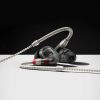




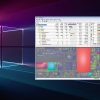

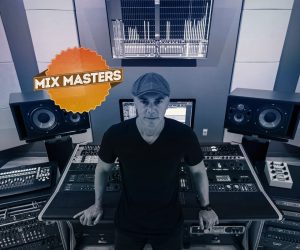

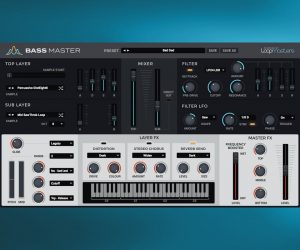





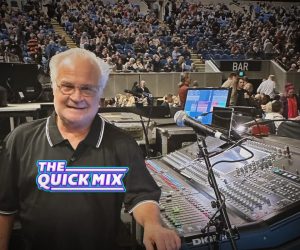





Great songwriting, awesome production.